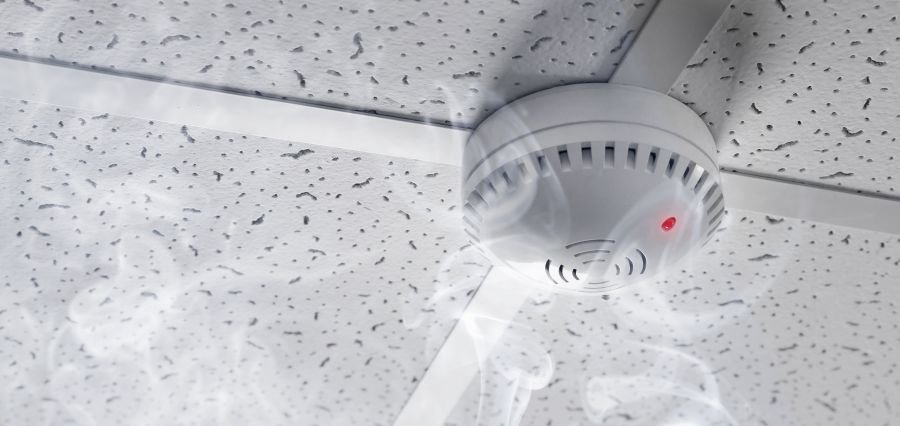When considering dangers that lurk inside our homes, the list that usually comes to mind includes burglars, the risk of an electric mishap, or fires. However, among these is one of the most silent and little-heard-of threats, carbon monoxide.
When called “the invisible killer,” carbon monoxide is a single cause of several fatalities a year, yet it is very hard to detect by the human senses, unfortunately, requiring special equipment for its detection. Consequently, knowing what it is, where it originates from, and how to keep safe from it is a must for each family.
What Is Carbon Monoxide and Why Is It So Dangerous?
Carbon monoxide, or CO, is a colourless and odourless smell that is made in the process of incomplete combustion of gases, including natural gas, wood, charcoal, propane, or oil. The problem is that the symptoms caused by the poisoning are detected, which do not advance the diagnosis anyway.
Moreover, such symptoms may develop rapidly and can be lethal in some cases. Apart from other household dangers ranked by sight or smell, CO does not necessarily give people a warning call, with their senses showing no visible smoke or obvious flames. In fact, it can sneak into a household quietly and make people victims while they are engaged in their everyday routine activities, such as cooking, heating, or sitting close to a fireplace.
What Causes Carbon Monoxide in a House?
What makes a person understand the danger posed by Carbon Monoxide, i.e., the effect it causes in a house? Generally, the major causes of carbon monoxide in a house are burning household appliances and heating systems. In other words, a broken furnace, a clogged chimney, or a gas stove improperly used that may cause a lack of ventilation are some of the causes that can make carbon monoxide accumulate to dangerous levels.
The same goes for automobiles that are left running in a closed garage, portable generators that are turned on indoors, and wood-burning stoves that are left on. Basically, any appliance that uses fuel to generate energy can release carbon monoxide if it is not maintained properly. What makes it very dangerous is the fact that people hardly feel that there is a problem until it is too late.
Symptoms of Carbon Monoxide Poisoning
One of the trickiest aspects of carbon monoxide poisoning lies in how easily its symptoms can be mistaken for something else. Flu is one of the typical illnesses whose symptoms, like those of CO poisoning, are the symptoms in the affected individuals in the initial stage, i.e., the length of exposure.
Weakness, headache, vomiting, and shortness of breath are among the symptoms the patient may complain of. With continued exposure, sometimes the situation gets so critical that it can lead to the onset of coma.
When a household is enveloped with carbon monoxide, if all the family members get sick at the same time, and particularly if this happens in the same room or there is an area where they feel better when they leave it, these may be strong indications of the presence of CO.
On the other hand, animals might show symptoms earlier than people since they are always more sensitive creatures, so this discloses yet another aspect of the warning that the homeowners should not overlook.
Everyday Mistakes That Increase CO Risks
What are the causes of carbon monoxide in the house? It is a question one must answer to identify the unguarded daily habits that surround us. For one thing, heating with a gas oven on a cold night may seem a little dangerous or even harmless, but it can emit a lot of carbon monoxide.
The same goes for a portable generator that is running inside the house or next to an open window, only in this case, CO is not released into the house, but the levels of the gas become high indoors.
Preventing Carbon Monoxide in the Home
Risk exposure is very detrimental; nevertheless, prevention is always within our grasp, which is the good news. Proper servicing of the heating system and appliances by professionals is a major step in ensuring that the burning process is efficient. Keeping ventilation routes open, assuring that chimneys are not blocked, and refraining from using grills and gas generators in the house can largely reduce dangers.
Above all, having a CO alarm system installed in every storey of your residence is a kind of early indication system. As with smoke alarms, the devices can save lives when the gas level goes up before people get symptoms. Quite a number of these detection systems today have digital displays that show current CO levels, thus giving users warnings even long before conditions become potentially fatal.
Carbon Monoxide Incidents and Lessons Learned
The news reports numerous times every year to inform us, sadly, about the harm this gas can cause. Families sometimes become the victims of this gas after a storm when the power goes out and they decide to run generators inside their homes. Some others, during the cold season, are completely unaware that their furnaces have breakdowns which are causing carbon monoxide leakages in their houses.
These events perfectly point out the significance of individual consciousness and preventive measures alike. Each catastrophe is a reminder of the lesson: never take the risk of carbon monoxide – the silent killer – lightly.
Why Knowledge Is the First Line of Défense?
Just knowing what carbon monoxide sources in a house are would be the first step towards safety. For instance, proper ventilation in the kitchen when cooking with gas or making sure that the car is not running in the closed garage are good safety measures that can avert possible exposures to the gas. Kids also learning the importance of the CO alarm would develop a safety culture within the family.
Creating a Safer Home Environment
A truly secure home is not only dependent on the presence of detectors but also on the decisions that are informed. Homeowners must treat CO detectors the same way as they do smoke alarms, whereby batteries are checked regularly and replaced as necessary. Detectors placed at the doors of bedrooms mean that families get warnings even at night before dangerous levels can build up.
These preventive measures, together with the annual inspections by certified technicians, provide a guarantee for safe utilization of furnaces, fireplaces, and other appliances that burn fuel.
Final Thoughts on Protecting Your Loved Ones
Most of the time, carbon monoxide receives less attention than it deserves on the list of home hazards. Fire, although being destructive and can be seen, has a different effect compared to CO, as the latter is silent and invisible yet lethal in a home.
Learning about what causes carbon monoxide in a house, being careful with one’s daily routine, and taking a few safety measures easily lowers the risk. There are no major changes in the house, and no big expenses are necessary, just the need for one to be aware, do routine maintenance, and have reliable detectors.
Nothing is more important than the safety of the people you care about. The home, which you breathe a sigh of relief at, is only one step away from being the most dangerous place if you fail to treat carbon monoxide as the alarming hazard that it is.
Just a few preventive measures today can save lives in the future, most probably literally, thus confirming that the combination of watchfulness and knowledge is the best defence against this invisible threat.




